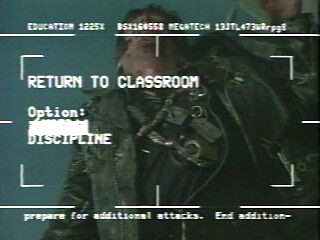 |
||
|
||
| ||
Accessories, specifications
The box of Aver's typical colors contains a device looking like a ladybird, a cable for connection to a sound card, a CD with drivers and other software and a manual in English. The tuner displays "SECAM D/K", though the box lacks for it. One of the circles on the ladybird is a button, though it might seem that all of them are buttons. The connectors hidden behind are standard: antenna, video and S-video inputs, and audio-out. Well, the first downside is a missing audio-in, which means that you can't use a video camera or VCR comfortably, - you will need to reconnect an audio cable, which is not standard at that. What it must do (information from the Aver's site with my comments):
InstallationTest system:
Installation under the Windows XP with the program supplied on the CD (v.2.10) fails. The drivers can't be installed or they are installed incorrectly. After the manual installation of the driver from \Drivers\WIN2000 everything works without problems and the red LED on the ladybird goes on. The only thing you have to do is to connect an audio cable to the line-in of the audio card and the audio-out of the tuner and an antenna cable. If you use a collective antenna, remember that your computer can burn; besides, do not touch the antenna cable and the computer simultaneously as it feels not very pleasant :). The problem can be solved by using your own antenna, though it can have negative consequences during thunderstorm...  TestsThe scanning is quite fast - 1-2 channels a second. However, a usual PCI AverTvPhone98 has it the same. Obviously, it has a scanning algorithms different from other tuners I have tested. For example, when a channel is detected, the tuner fulfills fine adjustment, that is why the process slows down on working channels. Intermediate values relative to the frequency grid can be lost at such approach, - who knows how the Taiwanese picture our frequencies. Now a little on the controls.
The tuner supports the USB 1.1 bus whose throughput is about 1.5 MB/s. We need 25 frames, i.e. 60 KB per frame ideally. What can be put into 60 KB? A frame of 320 x 240 with 1 byte per each of three main colors will make 230 KB without compression... It means that either frames are compressed or some of them are dropped. In this case they use compression. |
 |
| Well, the image shows no jaggies. Sensitivity is good, but not better
than that of internal tuners on the Philips' radio unit. There are no problems
with colors as well. That is why if the upsized image of 320x240 with smoothing
is enough, you can go and get it. Though you'd better read till the end
in case there is something more interesting.
Well, how do you like the load of the Intel Celeron 1800 MHz of 20-30% at 320x240 and up to 50% at 640x480? Before buying this device you should correlate these figures with the frequency and model of you processor. But I don't understand where such load comes from, because an Mpeg4 movie at a much higher resolution doesn't take so many resources...
Bear in mind that the device is not small. If the USB tuner Hauppauge fits in almost any notebook's case, the AVerTV USB is far not a match for many... In AverMedia they are probably very certain that people watch TV right in front of a monitor, and a remote control seems to be a useless things... Well, you have to use arrows to change channels (up and down) and adjust volume (left and right). As for sensitivity of the tuner, I must say that the radio unit of the Aver is its bottleneck, because a signal is much clearer when received via the Panasonic NV-SD450 VCR which was connected to the video-in of the AVerTv USB. But it doesn't mean that Aver has everything awful: it's Ok, though it can be better.
The tuner shows a signal from the video tape recorder decently. PAL, SECAM, NTSC were displayed excellently, at least, with the cassettes and VCR I used in the tests. Remember I mentioned that if the upsized image of 320x240 with smoothing enough..? Well, it means that if quality of home video recording in the VHS format suits you, you won't be disappointed. Of course, it's worse than 576 television lines, but for most people 240 is enough; plus, you get rid of the problem of TV interlace and herring-bone patterns on the screen. The last thing to be mentioned is a black strip which can be seen on the right of the video image. It also remains in case of the capture. This is a downside.  ProblemsSometimes, when we enabled the TV tuner, the pointer of the Logitech USB M-BJ69 mouse was tending to left, even though it was connected to another USB controller (there are three in all on the board). It can be cured by reconnecting the tuner to the computer. May I ask owners of this tuner and the Creative Web Cam Go inform me if you notice something similar. What's inside? The radio unit is standard and produced by Philips. Such unit is used in many internal TV tuners. Apart from the radio unit there are 4 chips. One is buffer memory (marked as ESMT); it's used for temporary storage of frames while data are compressed and transferred. The Winbond W9968CF chip is certainly in charge of video transfer via USB. Despite the maximum bandwidth of 12 Mbit/s the chip allows for 8 Mbit at most, allegedly in order to save space for USB mice and other peripherals. It means that USB tuners and USB cameras (some of which are also based on this chip) have leeway to grow even on the USB 1.1 bus. The chip can compress video image into MJPEG on the fly and transfer up to 30 fps in 352x288 (10-15 fps in 640x480). It looks as if the chip doesn't support interlacing because it was originally developed for web cameras, and I failed to find the opposite in its technical documentation, that is why the mode of 640x480 for a video signal is just a usual marketing trick. The third chip, Philips SAA7111AHZ, is a multistandard video-input processor with an integrated anti-aliasing filter. And the last chip, PT2313L, is a 4-channel audio processor supporting volume adjustment and having an equalizer and 3D sound functions. I don't understand why they used such a solution because the most functions of the chip are not supported by standard software... ConclusionIn spite of a low throughput of the USB 1.1 bus the device allows for watching
television programs comfortably, though in a lower, than standard, resolution.
Highs:
Lows:
|
Platform · Video · Multimedia · Mobile · Other || About us & Privacy policy · Twitter · Facebook Copyright © Byrds Research & Publishing, Ltd., 1997–2011. All rights reserved. |